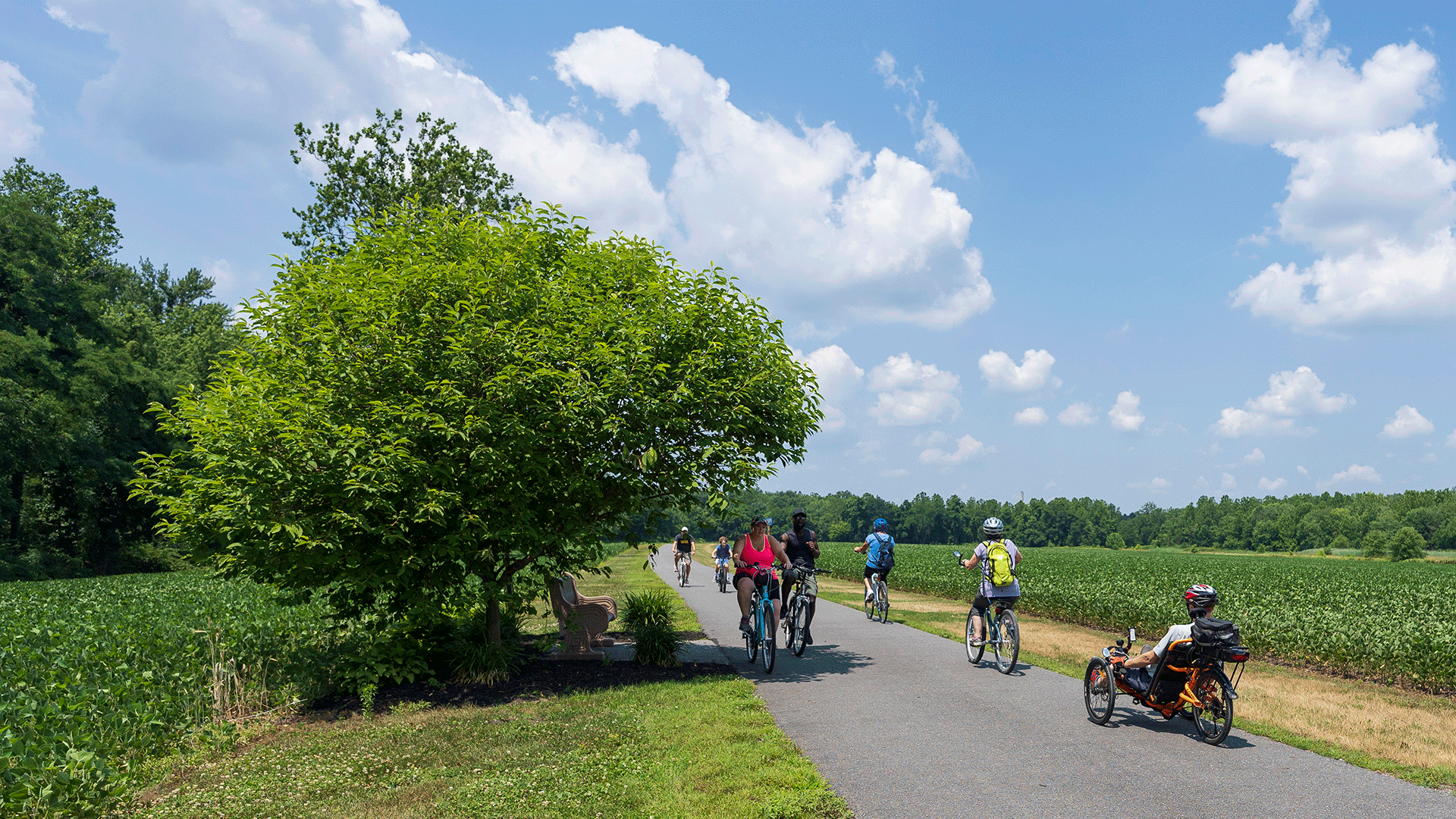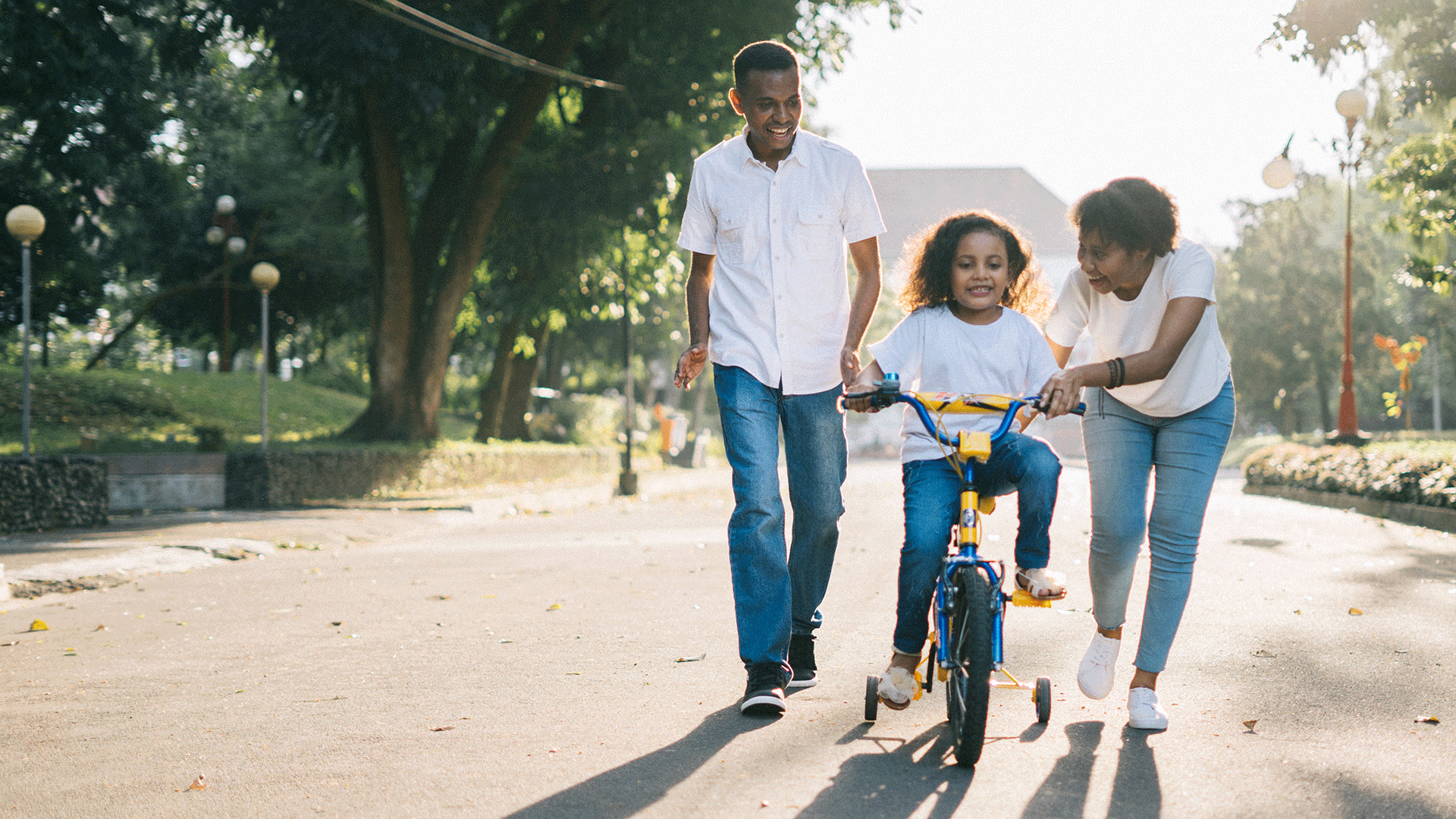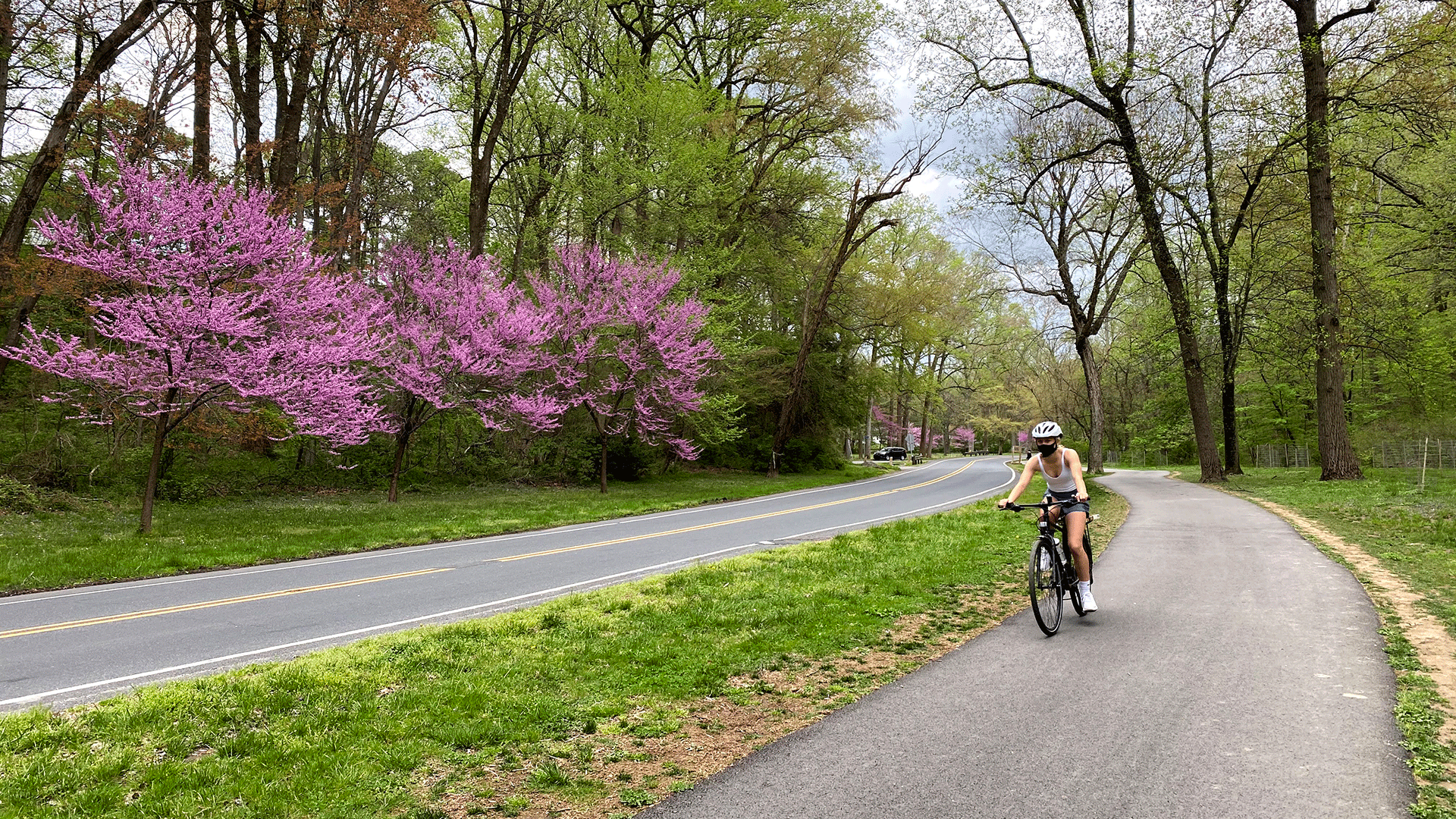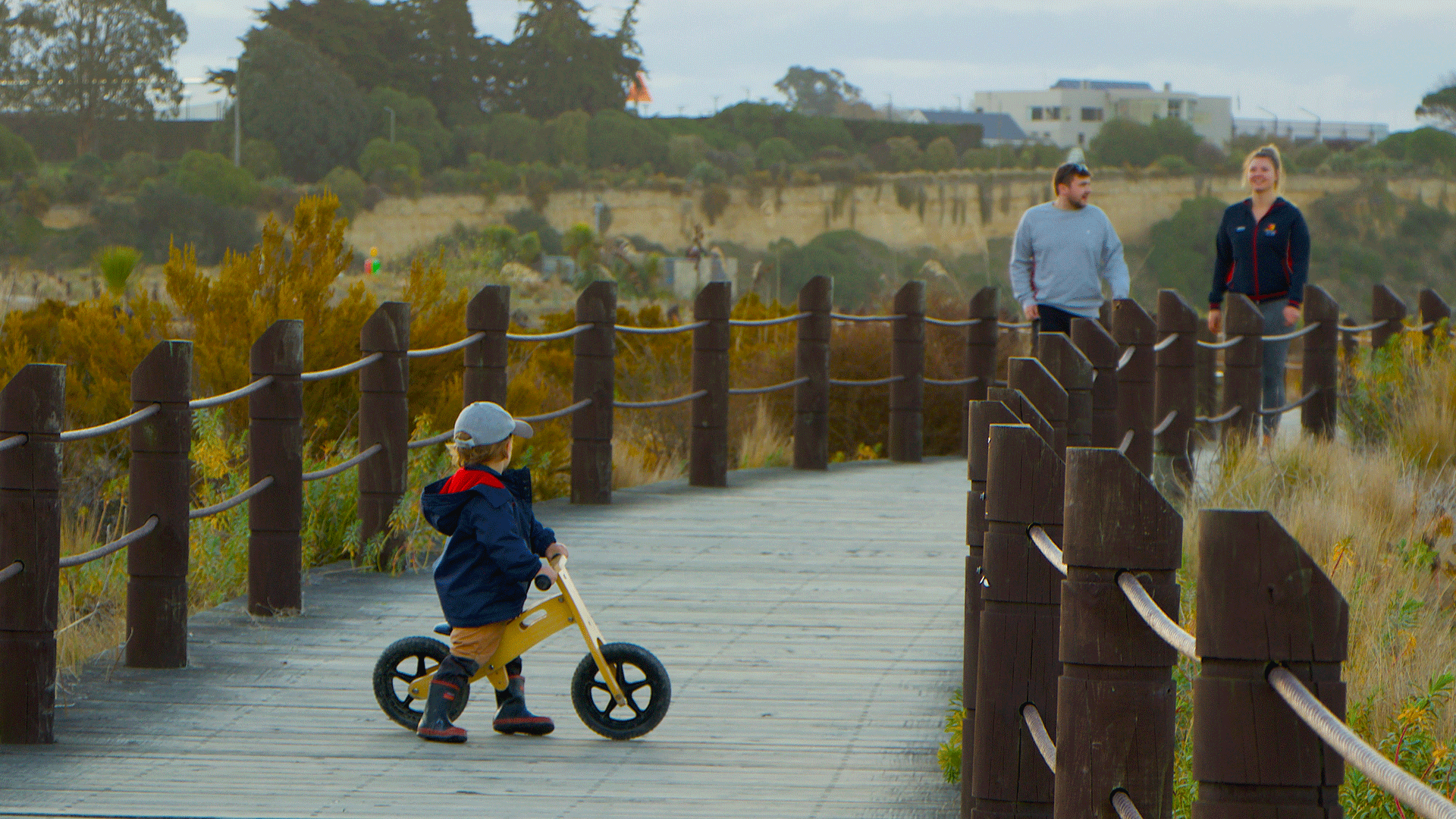August 23, 2023
Do communities form trails”¦ or do trails form communities?
If you ask us, the answer is: yes! Trails have the potential to powerfully influence the way a community moves. Thoughtfully designed trails can offer attractive ways to get around, provide convenient connections to the places we want to go and people we want to see, help improve physical and mental health, and become iconic community gathering spaces-for people of all ages and abilities!
To achieve these outcomes, trails must be born from the people who will use them. We often choose to build trails where we have space or available right of way, which can be a quick way to expand the network. However, many of the most well used and well loved trails are carefully planned to get people to the places they want to go, in a way that’s convenient and comfortable for them. When trail users are enticed by the convenience and utility of a trail and return for the safe and comfortable experience, that trail is on its way to becoming part of the community fabric.
Think about our country’s most iconic trails such as New York City’s High Line, the Atlanta Beltline, and the 18-mile Lakefront Trail in Chicago. Or, simply consider a trail in your community you love and use often. These trails have become irreplaceable elements of their cities through strategic planning, thoughtful design, and excellent maintenance. None of it happens by accident.
This article summarizes a few of the many principles we consider when planning, designing, and maintaining trails that become frequently used and well loved.

When trail users are enticed by the convenience and utility of a trail and return for the safe and comfortable experience, that trail is on its way to becoming part of the community fabric.
Trail Users & Context
Trail design and access should look very different depending on the places and people they serve. It’s imperative to start by understanding the unique needs of the community you’re working in and, by extension, the unique needs of the trail.
Origin and destination data can be useful for understanding travel patterns and identifying the biggest gaps in the active transportation network. But you also need a strong definition of who will use the trail. For the Gilbert Integrated Trails Master Plan (an element of the Town’s Transportation Master Plan intended to integrate the trail system into the transportation network), our team identified the primary users for each path in the town and developed path typologies to address user needs and varying land use contexts. In some places the trails are heavily utilized for recreational biking, in other places they are primarily used by students accessing schools, and some areas have high volumes of equestrian users. Each of these uses calls for different trail design considerations. Having reliable information about who will use your trail will guide you to plan and design a trail that meets the needs of the needs of the community.

Start by understanding the unique needs of the community you're working in and, by extension, the unique needs of the trail. This includes developing a strong definition of who will be using the trail.
Access to Trails & Destinations
Trails should be accessible through safe and comfortable active transportation connections. Thoughtful trail alignment has the power to connect people of all means to jobs, essential needs, and fun! Here are a few key principles we consider when evaluating trails and trail access:
- Get people all the way to their destinations. Trails have the potential to provide direct access to key destinations, but sometimes stop short. In these cases, additional connections are typically needed (think first mile/last mile). For example, San Antonio, Texas has a highly utilized trail network along its many waterways but limited on-street connections for people to walk or bike to the trails. In the San Antonio Bike Network Plan, our team is working with City departments to bridge those gaps by identifying street improvements to improve access between trails, the people who use them, and the places they want to go.
- Use data to fill gaps. We are currently completing Transportation Master Plans in Marana and Mesa, Arizona, two places that have extensive existing trail networks that are well utilized for recreation. Understanding the value these trails could provide in the transportation network, we are evaluating how many people can access key destinations via safe and comfortable on-street and trail connections. This includes analyzing level of traffic stress to understand where someone could reasonably go in 15 minutes walking or biking on the low-stress network-taking into account crossings and street segments which might be uncomfortable for people most people-and analyzing barriers to each access point, like fences between a trail and business. This analysis is helping the agencies identify the biggest gaps and high impact connections which could fill those gaps.
- Trails, and trail connectors, are more than one thing. Trails, and the important connections we build to them, can look different from community to community. In North Carolina, we’ve completed trail planning projects in Charlotte and Cary that connect traditional greenway trails into urban centers using unique design solutions. In Charlotte, that meant connecting to creekside greenways using a network of two-way separated bike lanes (a.k.a. cycle track) through Charlotte’s dense Uptown environment. In Cary, that meant narrowing travel lanes for cars to accommodate wider sidewalks and new pedestrian crossings that will connect a nearby greenway to the Cary Regional Library, Arts Center, Downtown Park, and Elementary School.

Trails have the potential to provide direct access to key destinations. The key is getting trail users all the way there.
Trail-Oriented Development
When you see the acronym TOD, you may think of transit-oriented development. But the “T” in this phrase can stand for trails too! Sometimes referred to as “TrOD,” development near trails can achieve the same goals as development near transit stations: namely, providing affordable car-free transportation access options. Trail-oriented development also enhances the experience of trail users; giving them convenient spots to stop, take breaks, and grab a bite to eat. This can boost local businesses and enhance the sense of place on the trail, further solidifying it as an integral piece of the community.
In 2021, we completed a study of four trails in Massachusetts to help quantify the economic impact of TrOD. We found that 42% of trail users spent money at local businesses while using the adjacent greenway/path and together, the four paths/greenways sustain approximately 140 jobs across their local areas. The study also highlighted the great return on investment that governments can expect from trails and associated TrOD. The combined tax revenue from the four paths/greenways over just four months (July-October 2019) was more than $860,000 from state and local taxes and $1.1 million in federal taxes.
Trail Widths & Crossings
Trail design involves many intricate elements. Here are just a few of the many important elements to consider:
- Design trail widths based on anticipated use. Consider what trail width is needed to comfortably accommodate anticipated volumes, balancing this with financial and environmental constraints. MassDOT is pioneering the development of trail volume estimation methodologies, which bring together big data, land use characteristics, population data, and other insights to estimate future trail volumes. These volume estimations not only help MassDOT identify which trails are most investment-worthy but also can inform planning and design decisions like alignments and trail widths.
- Plan for users of all abilities. When appropriate, accessible features are important to meet the needs of a diverse community. For example, equestrian trails may require wider treads to accommodate assistants or caregivers who ride alongside a user. Also, grades may need to be flatter and trails may need to be wider in order to accommodate things like cargo bikes, accessible bikes, assistive devices, and strollers.
- Design crossings to create seams instead of barriers. When designing crossings, pay attention to where the trail intersects existing roadways and determine where additional safety features like signage, signals or beacons, raised crossings, or grade-separated crossings (where trail users cross either over or under the roadway to avoid conflicts) are called for. These decisions go back to an understanding of destinations and access points. If a roadway crossing provides important, low-stress connections for trail users, there may be value in intersecting the trail at grade. At crossings of high-speed roadways with heavy car traffic and no separated facilities for walking and biking, grade-separated trail crossing should be considered.
Design Elements & Community Character

The aesthetics of a trail should reflect a community-driven approach to planning and design. Community context can be thoughtfully infused on a trail through landscaping, placemaking, and art installations. For example, a community might:
- Install native plants with identification signage along the trail
- Design wayfinding signs that match the community’s character and branding
- Hire local artists to craft community-inspired art (this is a technique we’re supporting in Cary, NC where a local artist is working with elementary school students to design decorative fencing along the trail)
Each of these elements is a meaningful way to demonstrate that the trail is a natural extension of its community.
Maintenance & Coordination
Trail maintenance should be integrated with the plan from the beginning. Know who will maintain the trail and have a plan for continued maintenance. (In a prior article, we offer six suggestions for making bicycling facilities resilient to weather events; read them here!)
Maintenance takes careful planning. Kittelson recently had the chance to conduct a conditions assessment of the trails network across the entire State of Massachusetts. That work set the stage for a trail maintenance and modernization plan to identify where trail maintenance is needed to improve safety and comfort, where crossing improvements may be needed, and where wayfinding, restroom facilities, and other amenities should be added to better serve trail users. This assessment is equipping MassDOT to understand the funding necessary to upgrade their trail network statewide.
Maintenance also takes collaboration. In many cities, the Parks & Recreation Department is responsible for managing trails, while Public Works or a transportation department manages the streets that access the trails. For this reason, cross-departmental partnership from the beginning is essential, and can pave the way for seamless integration. The MassTrails model, in which multiple agencies connect regularly about trail topics-from funding through design and planning, is one that can be replicated to encourage this collaboration.

Beloved trails are well-maintained trails. Trail maintenance should be integrated with the plan from the beginning.
How We Approach Trail Projects
At Kittelson, we’ve been fortunate to work on a range of trail projects across the country. Our philosophy has always been to think beyond the trail: using trails as important community-building assets within the larger active transportation network.

Do communities form trails”¦ or do trails form communities? Yes!
We believe trails are most successful when a community-driven design process supports a sense of ownership and belonging among trail users. Trails offer powerful opportunities to connect and strengthen our communities. That’s why we are so passionate about offering a full spectrum of trail planning and design services to our clients-from policy and spatial analysis through final design and maintenance planning-with a particular specialization in engineering how a trail interacts with a roadway or makes an on-street connection.
If you’d like to learn more about any of these projects or talk through any of the ideas in this article, please reach out to any of us!
